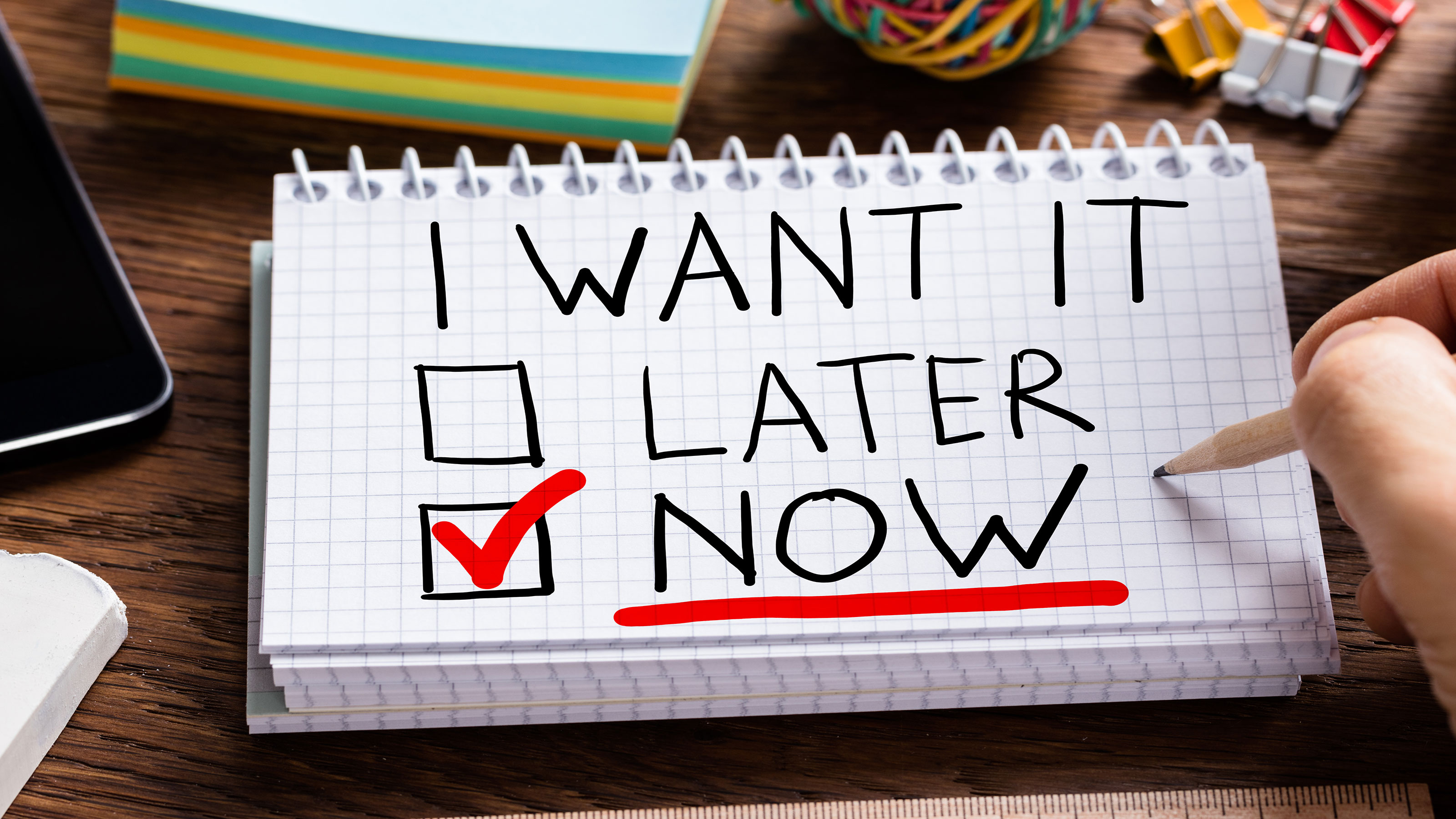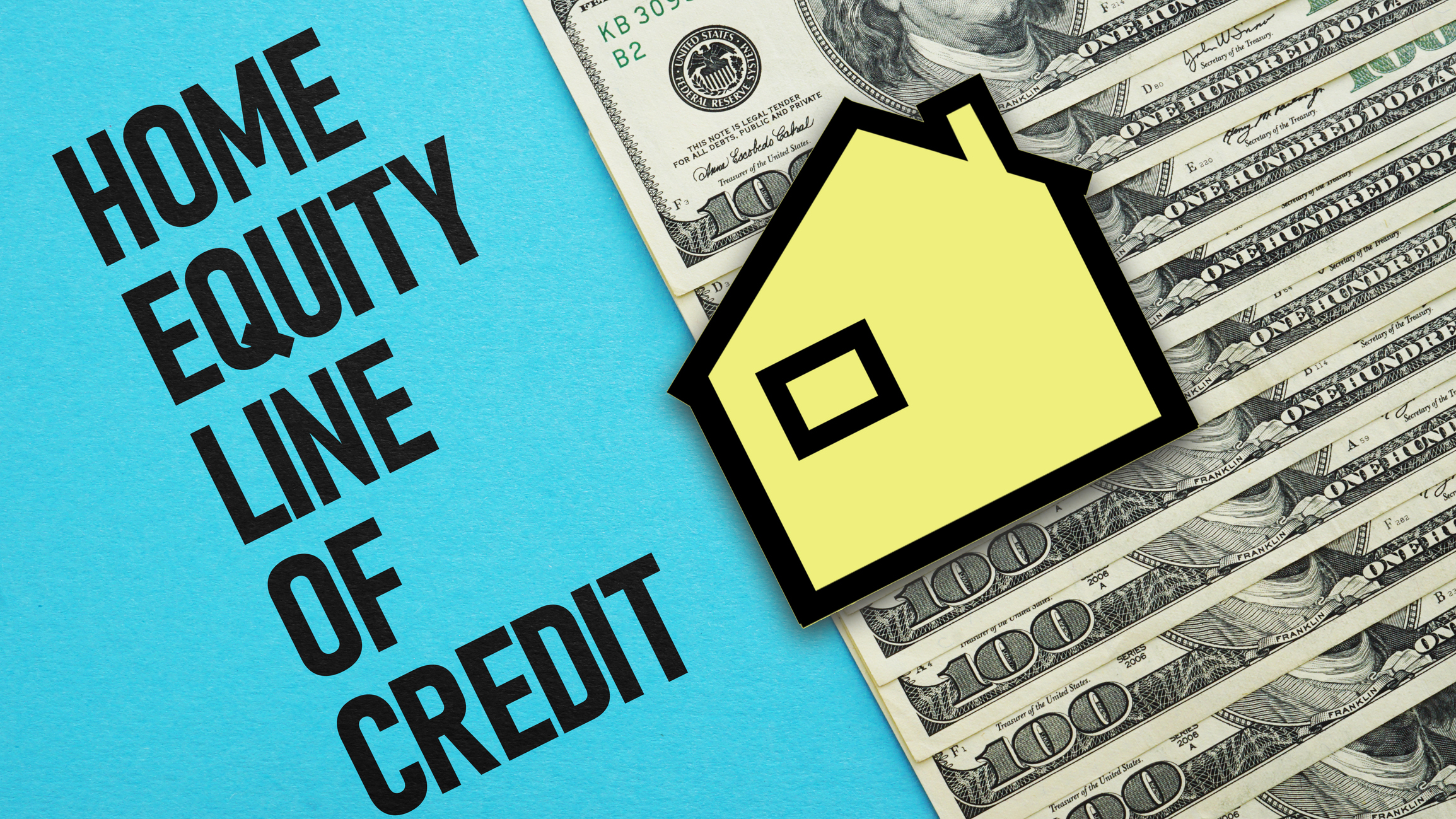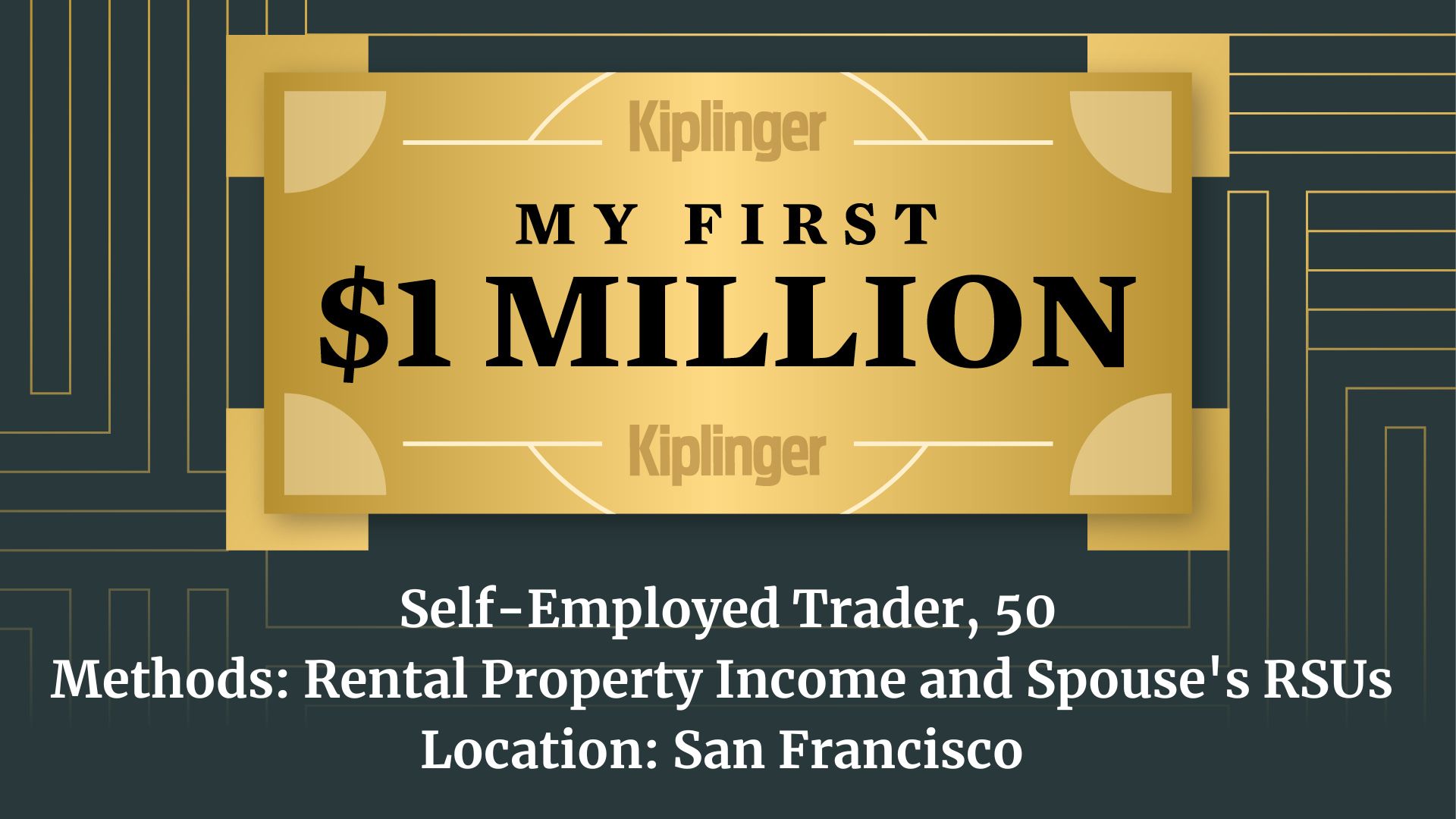Don't Make These 'Buy Now, Pay Later' Mistakes
Extended payment plans can help ease the sting of a big-ticket purchase. But beware of costly missteps that can add to your price.


When Stephanie Rogers needs to make a big purchase for Christmas or an upcoming trip, she turns to a convenient tool handily located at the checkout of nearly all online retailers these days: buy now, pay later plans.
Offered by companies such as Affirm, Afterpay, Klarna and PayPal, these financing services split the cost of purchases into equal installments over a few weeks, usually with no interest charges.
“It seemed like a no-brainer to try it,” says Rogers, 51, a medical retail worker in Troy, Mo. “I like to spread out my payments for cash flow purposes.”
From just $107.88 $24.99 for Kiplinger Personal Finance
Become a smarter, better informed investor. Subscribe from just $107.88 $24.99, plus get up to 4 Special Issues

Sign up for Kiplinger’s Free Newsletters
Profit and prosper with the best of expert advice on investing, taxes, retirement, personal finance and more - straight to your e-mail.
Profit and prosper with the best of expert advice - straight to your e-mail.
Buy now, pay later plans have been popular among younger generations — Millennials and Gen Zers — for a while, but lately BNPL has been taking off among the over-50 crowd, too.
Afterpay says the number of orders it receives from older shoppers has been rising recently, and 13% of Baby Boomers and 28% of Gen Xers have used one of these plans, according to a 2025 survey from financial services company Motley Fool.
Higher earners have been adopting this payment option as well, with nearly one-third of those earning $100,000-plus now using BNPL, a recent Bankrate study found.
“The conventional wisdom was that young people without much money and without much credit were using BNPL,” says Ted Rossman, a senior industry analyst at Bankrate. “There’s still some of that, but BNPL has also moved upmarket.”
Buy now, pay later plans can be a useful way to get extra time to pay off purchases, especially expensive ones, without incurring interest.
Those are the top reasons consumers, especially older shoppers, cite for using the services, Bankrate found. Younger shoppers were more likely to also appreciate the easy credit-approval process.
But research shows that because the plans make the price of a purchase seem less painful, they lead many people to overspend — a big reason, along with late fees, that nearly 40% of users ultimately regret opting for the service, Motley Fool found.
With credit-scoring company FICO announcing this year it is creating models that will take BNPL payments into account and more BNPL services sending data to the credit-reporting companies, it’s especially important now to know exactly what you’re getting into before you click on this payment option.
How BNPL works
Think of a buy now, pay later service like an old-fashioned layaway plan in reverse. Instead of making payments and then taking the item home, you get your purchase right away, then pay off what you owe over time, with the total typically split into four equal interest-free installments.
You make the first payment when you check out, then a subsequent one every two weeks until the balance is paid off at the end of six weeks.
Many BNPL providers also offer the option of longer-term plans, often ranging from three to 24 months, for larger purchases.
Instead of weekly, payments are due monthly, typically with interest that can range from 0% to as high as 36%, depending on your credit and income, factored into the bill.
To apply, you select the BNPL option at the retailer’s online checkout, answer a few basic questions about yourself, and supply a debit or credit card number.
Within seconds, most people are approved; the industry rejected only 22% of applications in 2022, the Consumer Financial Protection Bureau found. Some BNPL companies may conduct soft credit checks, which do not impact your credit score.
Until this year, using a buy now, pay later plan didn’t affect your credit score either, as long as you didn’t miss a payment or end up with your debt sent to collections. But the industry is starting to change that, with both Klarna and Affirm now sending more BNPL loan data to credit-reporting companies such as Experian and TransUnion.
Meanwhile, FICO is incorporating BNPL data into two of its new scoring models this fall.
The impact is likely to be minor, though. According to a yearlong FICO study, the change to most consumers’ credit scores was within 10 points, higher or lower, after adding BNPL data, similar to the impact of opening a new credit-card account.
Even with the new changes, it will likely be a while before BNPL usage affects your credit in a meaningful way, in part because it takes a while for lenders to adopt the newest scoring models, says Adam Rust, director of financial services at the Consumer Federation of America.
And when it does have an effect, he says, you’ll need to use the service a lot, not just for an occasional purchase, for your activity to really have an impact.
How to use BNPL wisely
Tempted to try out a buy now, pay later plan? Experts suggest these steps to take advantage of the service without it taking advantage of you.
Know your billing schedule
Each BNPL loan has a unique repayment schedule that begins on the day you make the purchase.
With most services, you must set up automatic payments — and regardless of whether it’s required, it’s a good idea to do that and sign up for bill reminders to ensure you don’t miss a due date.
Nearly one in three users has lost track of payments, Motley Fool reports. That can be a costly error, because many BNPL providers charge late fees, commonly around $10.
Fight the urge to splurge
When stores add a BNPL option, it not only makes us more likely to buy but also raises the average checkout total by 10%, according to research published in the Journal of Marketing.
By splitting the payment up into smaller chunks, BNPL makes you “perceive costs as more trivial,” the research found. The plans also spur more impulse purchases, so Rossman advises waiting a day or two before buying so you can reevaluate with fresh eyes.
Set ground rules
Some BNPL shoppers use the plans to finance food delivery, groceries, concert tickets, clothing and other discretionary items with a short shelf life. Don’t be one of them.
Instead, Rossman suggests, restrict your BNPL purchases to higher-ticket items you really need so “you can spread payments out and isolate them from the rest of your finances” — say, if your refrigerator breaks and you need a replacement or you want to manage the cost of pricey dental work.
Limit your purchases to items you’re sure you’ll keep, because 14% of buyers have had problems returning items and getting a full refund, Bankrate found.
The CFPB issued a rule last year requiring BNPL lenders to follow the same dispute-resolution standards as credit cards, but the bureau has pulled back from enforcing that rule. If you’re unsure, pay by credit card instead. “Credit cards have far better protections than BNPL,” says Rust.
Stick to one purchase at a time
Three in five BNPL users have taken out multiple loans simultaneously, with nearly one-fourth holding three or more at once, LendingTree found. That makes keeping on top of payments and avoiding late fees more difficult.
“BNPL is already clunky, requiring you to track several small, constant payments,” says Rust. “If you have multiple BNPL loans from different providers, you just amp that up.”
Consider alternatives
Many credit card issuers also offer their cardholders BNPL services, such as Plan it from American Express and Citi’s Flex Pay. These plans allow you to separate some larger purchases from your balance to be repaid through fixed installments for a fee — often equal to 7% to 10% interest, far less than you’d pay on a typical credit card revolving balance.
Or, if your credit score is 670 or better, you might apply for a credit card with a 0% introductory offer on purchases. Those offers typically last 12 to 24 months, such as ones recently from the Wells Fargo Reflect and U.S. Bank Shield cards.
“Credit cards can be like power tools — really useful or really dangerous, depending on how you use them,” says Rossman. “The same analogy applies to BNPL.”
Note: This item first appeared in Kiplinger Personal Finance Magazine, a monthly, trustworthy source of advice and guidance. Subscribe to help you make more money and keep more of the money you make here.
Related content
Profit and prosper with the best of Kiplinger's advice on investing, taxes, retirement, personal finance and much more. Delivered daily. Enter your email in the box and click Sign Me Up.

Kerri Anne Renzulli is an award-winning personal finance journalist whose work has been featured in the Wall Street Journal, USA Today, AARP, Newsweek, Money, CNBC, Fortune, Mansion Global and Financial Planning Magazine. She has written about student loans, taxes, banking, retirement planning and other complex financial issues for more than a decade.
-
 December Fed Meeting: Live Updates and Commentary
December Fed Meeting: Live Updates and CommentaryThe December Fed meeting is one of the last key economic events of 2025, with Wall Street closely watching what Chair Powell & Co. will do about interest rates.
-
 This Is Why Investors Shouldn't Romanticize Bitcoin
This Is Why Investors Shouldn't Romanticize BitcoinInvestors should treat bitcoin as the high-risk asset it is. A look at the data indicates a small portfolio allocation for most investors would be the safest.
-
 I'm a Federal Benefits Pro: I Answer These 2 Questions a Lot
I'm a Federal Benefits Pro: I Answer These 2 Questions a LotMany federal employees ask about rolling a TSP into an IRA and parsing options for survivor benefits, both especially critical topics.
-
 Smart Money Moves Savers Should Make in 2026
Smart Money Moves Savers Should Make in 2026These steps will get you on the road to achieving your 2026 savings goals.
-
 How Much Would a $50,000 HELOC Cost Per Month?
How Much Would a $50,000 HELOC Cost Per Month?Thinking about tapping your home’s equity? Here’s what a $50,000 HELOC might cost you each month based on current rates.
-
 My First $1 Million: Self-Employed Trader, 50, San Francisco
My First $1 Million: Self-Employed Trader, 50, San FranciscoEver wonder how someone who's made a million dollars or more did it? Kiplinger's My First $1 Million series uncovers the answers.
-
 Waiting for Retirement to Give to Charity? Here Are 3 Reasons to Do It Now, From a Financial Planner
Waiting for Retirement to Give to Charity? Here Are 3 Reasons to Do It Now, From a Financial PlannerYou could wait until retirement, but making charitable giving part of your financial plan now could be far more beneficial for you and the causes you support.
-
 Are You Ghosting Your Finances? What to Do About Your Money Stress
Are You Ghosting Your Finances? What to Do About Your Money StressAvoidance can make things worse. You can change your habits by starting small, talking with a family member or friend and being consistent and persistent.
-
 Your End of Year Insurance Coverage Review Checklist
Your End of Year Insurance Coverage Review ChecklistStop paying for insurance you don't need and close coverage gaps you didn't know about with this year-end insurance review.
-
 4 Smart Ways Retirees Can Give More to Charity, From a Financial Adviser
4 Smart Ways Retirees Can Give More to Charity, From a Financial AdviserFor retirees, tax efficiency and charitable giving should go hand in hand. After all, why not maximize your gifts and minimize the amount that goes to the IRS?
-
 I'm an Insurance Pro: If You Do One Boring Task Before the End of the Year, Make It This One (It Could Save You Thousands)
I'm an Insurance Pro: If You Do One Boring Task Before the End of the Year, Make It This One (It Could Save You Thousands)Who wants to check insurance policies when there's fun to be had? Still, making sure everything is up to date (coverage and deductibles) can save you a ton.